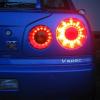R32 Gtr Parts For Sale (I Am Wrecking 'go21La')
Announcements
-
Similar Content
-
Latest Posts
-
Has anyone used 16 x 1.5 to - 6 orb to AN fittings on the pump? Are you still able to get the electrical connectors (chassis side) circled in the attached image and how could I the part numbers if so? I believe the pump I'm using is an R34 vspec/hydraulic locking rear. Thanks
-
By joshuaho96 · Posted
Yes, just throw some gaskets at it and put it back in. As long as everything is actually designed to bolt up together it will all go back together. My CA compliant exhaust for example can only fit with the specific catback I gave them. -
By aligatorcat · Posted
Sorry I missed this. I ended up getting one locally. Appreciate your time to help. -
By thomasLait · Posted
Yes it is, the nm35 stagea has OBDII idk if the WC34 has it tho -
Talk to Avondale Body Works, had a repair done there long ago and was a good experience.
-






Recommended Posts
Create an account or sign in to comment
You need to be a member in order to leave a comment
Create an account
Sign up for a new account in our community. It's easy!
Register a new accountSign in
Already have an account? Sign in here.
Sign In Now